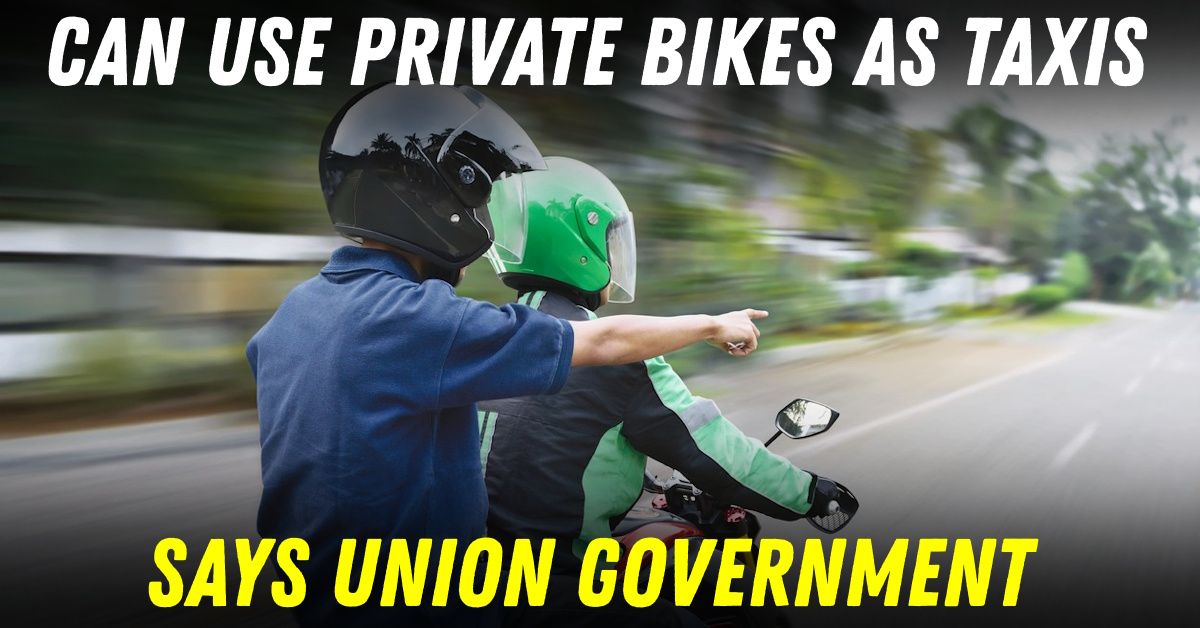Ola, Uber, Rapido Bike Taxis Legalized By Union Government But States Will Have The Final Say


Bike taxis may soon be back in business. The central government has issued a comprehensive set of rules for two-wheeler taxis, paving the way for companies like Rapido, Ola, and Uber to expand services across cities without the regulatory roadblocks that had previously forced them out of several states. The move is being seen as a big step towards solving last-mile connectivity challenges while also offering flexible income options for youth and gig workers.
For the past few years, the legality of bike taxi services in India has been under constant debate. While some states like Telangana and Karnataka supported them, others such as Maharashtra and Delhi raised safety and compliance concerns, even banning the services temporarily. The absence of a national framework meant that operators often had to deal with inconsistent rules, sudden bans, or penalties for operating without commercial licenses.
Now, the Centre has stepped in to end the confusion. Under the new guidelines, private two wheelers can be used for commercial carriage provided the state government permits such use. Bike taxi operators must provide safety gear to riders and passengers, and ensure that the drivers hold valid driving licences. Helmets for both rider and pillion are mandatory. Vehicles must also be insured. Now, apart from the new clause that now permits private two wheelers for commercial use, other rules are already in place.
With these new rules, platforms like Rapido, which had taken legal action against local bans, can now operate with more certainty. Ola and Uber, which had largely limited bike taxi operations to cities with clear permissions, are also expected to ramp up services quickly. Initial reports suggest that companies are already reaching out to former riders and onboarding new ones, especially in Tier 1 and Tier 2 cities where short-distance travel is a daily necessity.
The appeal of bike taxis is clear. They are cheap, fast, and ideal for beating city traffic. A 5-kilometre ride usually costs between ₹25 and ₹40, far cheaper than an auto-rickshaw or a cab. For students, office-goers, and even tourists, this makes it a convenient choice, especially for reaching places not directly served by metro or bus services.
For the rider community, the return of legalised bike taxi services means an opportunity to earn a livelihood or supplement income. Many riders operate part-time during peak hours or weekends. With fuel prices high and jobs limited in some sectors, the gig economy continues to attract young workers looking for flexible schedules and quick earnings. Some platforms are even considering introducing electric two-wheelers into their fleets to reduce fuel expenses and align with sustainability goals.
Transport is a state subject, and state governments will have the final say on whether bike taxis will be permitted to ply on roads. This will require the state government to take on powerful autorickshaw and cab unions.
Safety remains a concern. While helmets are now mandated for both parties, enforcement in Indian cities is often weak. Authorities will need to work closely with platforms to monitor safety compliance. Some services are exploring GPS tracking and emergency SOS buttons within their apps to further enhance passenger security.
There’s also the question of infrastructure. Designated pick-up and drop zones for bike taxis are rare. Cities will need to rethink urban design to include space for quick stops, especially near metro stations, malls, and bus depots. Without this, bike taxis may end up clogging already narrow lanes or facing fines for unauthorised parking.
Overall, the return of bike taxis under a formal framework offers a win-win scenario. Commuters get affordable, efficient travel; riders gain employment; and city planners can reduce congestion by moving more people on smaller, less polluting vehicles. The rules may still evolve, but for now, the road is open, and the engines are revving.